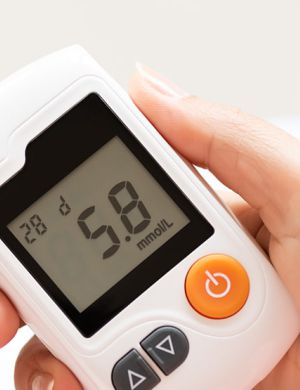
Pharma/Biotech – USA, Europe Regulatory News, Feb 2023 Vol. 1
US
FDA Issues Draft Guidance on Developing Drugs for Treatment of Acromegaly
Sponsors developing drugs for treating acromegaly should assess the relationship between doses and/or exposure-response based on insulin-like growth factor 1 (IGF-1) levels in early-phase trials, the FDA said in a draft guidance released Monday.
ICH Finalizes Revised Quality Risk Management Guideline
The International Council for Harmonization (ICH) has issued the final version of its revised guideline on quality risk management ICH Q9(R1), adding information on risk management methodology, such as assessing the degree of risk analysis required, risk-based decision-making and managing subjectivity.
FDA officials impart lessons learned from quality management maturity pilots
The US Food and Drug Administration’s (FDA) should brief pilot participants ahead of the actual assessments and use a simplified rubric for scoring or rating a manufacturers quality management maturity (QMM) program. These pilots “afforded FDA the opportunity to learn important lessons about the establishment of a QMM assessment process, scoring approach, assessor behaviors, and perceptions of the assessment questions, reports, and ratings.” The twelve FDA officials who authored the article said the lessons learned from the study will inform the development of a QMM program.
Orphan Drug Exclusivity Regulations Will Remain As Is, Says FDA
The FDA said it will keep in place its regulations on orphan drug exclusivity rather than altering them in response to a pivotal U.S. appeals court ruling. The agency said it plans to continue to tie orphan drug exclusivity to the uses or indications for which the orphan drug was approved rather than considering allowing for more expansive marketing rights. The seed of the controversy was the FDA’s approval of Catalyst Pharmaceuticals’ amifampridine product Firdapse in 2018 for the treatment of Lambert-Eaton Myasthenic Syndrome (LEMS) in adults, giving Catalyst exclusive marketing rights for seven years.
WHO Urges Action to Protect Children from Contaminated Cough Syrup
The World Health Organization (WHO) is calling for urgent action by regulators and governments after more than 300 children have died in three countries — Gambia, Indonesia, and Uzbekistan — from cough syrup contaminated with high levels of diethylene glycol (DEG) and ethylene glycol (EG), toxic chemicals used as industrial solvents and antifreeze agents. The WHO is asking regulators to remove the tainted products from shelves and increase market surveillance including risk-based targeted testing.
CDER Proposed Quality System Scoring Plan Too Complex, Pilots Show
The FDA’s Center for Drug Evaluation and Research (CDER) has concluded that its proposed quality management maturity (QMM) scoring system is “too complex,” based on findings from two pilot programs.
Re-examined Oncology Protocols Say Maximum Tolerated Dose is Not for Everyone
Oncology drug trials should consider a wide range of dosages and how they impact a wide variety of participants, rather than immediately titrating patients up to the maximum tolerated dose (MTD), the FDA said in a new draft guidance.
FDA Releases Final guidances on Standardized Format for REMS Documents
Two final documents from the FDA outline a standardized structure and language for risk evaluation and mitigation strategy (REMS) documents to make them more clear and consistent and submissible in Structured Product Labeling (SPL) format.
FDA Guidance Details Expectations for Dosage and Administration Labeling
A new draft guidance from the FDA provides a variety of recommendations for the content of drug dosage and administration labeling, including information on dosage range, risks related to drug
ICH Drafts New Guideline on Bioequivalence Testing for Solid Oral Drugs
The International Council for Harmonization (ICH) has released a first draft of a new guideline that offers parameters for bioequivalence (BE) studies of immediate-release solid oral drugs, including considerations for selecting study participants.
CERSI Summit: Wider use of real-world evidence continues to face hurdles
The widespread use of real-world evidence (RWE) in regulatory decisions continues to face challenges, including problems with data quality and methodologies, and a disconnect between the endpoints used by regulators and the information collected in clinical practice, according to panelists at the 2023 Innovations in Regulatory Science Summit sponsored by the UCSF-Stanford Center of Excellence in Regulatory Science and Innovation (CERSI). “I wish we could get rid of the term real-world data and real-world evidence,” Jeff Shuren, MD, director of the Center for Devices and Radiological Health (CDRH) at the US Food and Drug Administration (FDA), said at the CERSI Summit. “We were an early adopter of that at the FDA and it’s become a four-letter word. At the end of the day, we’re talking about clinical evidence.”
CDER director calls for simplifying clinical trials to boost diversity
Encouraging researchers and sponsors to simplify clinical trials and employ a fit-for-purpose protocol is one way that the US Food and Drug Administration (FDA) can promote recruitment of trial populations that are racially and ethnically diverse, according to Patrizia Cavazzoni, director of the Center for Drug Evaluation and Research (CDER). FDA has been focused on increasing clinical trial diversity, issuing draft guidance in April 2022 that calls on sponsors to develop a Race and Ethnicity Diversity Plan to enroll adequate numbers of trial participants from underrepresented racial and ethnic populations in the United States. While guidance is one of the agency’s tools to increase diversity, Cavazzoni said FDA can also encourage the use of innovative trial designs.
Industry calls for flexibility in FDA’s pediatric measurement guidance
A pharmaceutical trade group and several drugmakers urged the US Food and Drug Administration (FDA) to take a more flexible approach in its guidance on pediatric measurements in clinical trials and questioned whether 12 months is sufficient to provide meaningful information for growth and development. These comments were made in response to the agency’s call for feedback on the draft guidance, which outlines ways sponsors can measure pediatric growth consistently in clinical trials for drugs used to treat both rare and common diseases. The guidance, issued jointly by the Center for Drug Evaluation and Research (CDER) and the Center for Biologics Evaluation and Research (CBER) address the collection of growth measurements such as weight, linear growth, and in certain cases, head circumference.
Drugmakers, advocacy groups ask FDA to clarify expanded access draft guidance
Pharmaceutical companies and research advocacy groups are asking the US Food and Drug Administration (FDA) to clarify some of the provisions of its recently updated expanded access draft guidance. Commenters inquired about the agency setting a response time frame for responding to expanded access waivers, when children qualify for expanded access drugs and expanded access to medical devices. In November, FDA published the updated draft guidance for when investigational new drugs (IND) can be used under expanded access. It includes new frequently asked questions about how expanded access can be implemented based on new regulatory access and statutory requirements under the 21st Century Cures Act (Cures Act) and FDA Reauthorization Act of 2017 (FDARA).
Provider groups, researchers raise concerns about extrapolating adult data in children
Clinicians and researchers are voicing concerns that the US Food and Drug Administration (FDA) has overemphasized the role for extrapolating adult data in pediatric populations as part of recent draft guidance on ethical considerations for conducting clinical trials that involve children. In September 2022, FDA issued draft guidance aimed at assisting industry, sponsors and institutional review boards (IRBs) when conducting or reviewing clinical investigations of drugs, biological products and medical devices in pediatric populations. The guidance explores the principle of scientific necessity, noting that “for products that are being developed for use in adults and children, if effectiveness in adults can be extrapolated to children, then effectiveness studies in adults should be conducted to minimize the need to collect effectiveness data in children.”
Pharma groups say ICH guideline on viral safety evaluation needs to incorporate continuous manufacturing
US pharmaceutical industry groups endorsed the major principles of the International Council for Harmonization’s (ICH) Q5A(R2) guideline on viral safety of biotechnology products but said it could be improved by incorporating continuous manufacturing principles and clarifying materials testing recommendations. These comments were made in response to FDA’s release of the Q5A(R2) guideline for public comment in November 2022. The deadline for comments was 13 January.
Stakeholders seek flexibility, greater harmonization in FDA human subject protection rules
Commenters from the pharmaceutical and medical device industries, academia and medical groups urged the US Food and Drug Administration (FDA) to help ease the complexity of the informed consent process by providing more flexibility and additional harmonization between the agency’s regulations on human subject protections and the revised Common Rule, which governs research conducted or supported by the US Department of Health and Human Services. FDA issued two proposed rules in September 2022 outlining changes to the informed consent form and allowing Institutional Review Boards (IRBs) to eliminate continuing review of research under certain circumstances. Additionally, the agency is proposing to harmonize its cooperative research requirements with those in the Common Rule, which requires a single IRB review process for multisite research in most cases.
EU
EMA Adopts ICH Q13 Guideline on Continuous Manufacturing
The European Medicines Agency (EMA) is the first regulator to adopt the International Council for Harmonization (ICH) new guideline Q13 on continuous manufacturing (CM) of drug substances and drug products, effective July 10, 2023.
EMA certificates of medicinal products – instructions on how to fill the application form
EMA has updated the document of instructions on how to fill the application form. This form is intended for requesting EMA certificates of medicinal products only. It can be used as of date of publication. Requests cannot be submitted on any other form. A complete request includes Part A and Part(s) B of the form and, if applicable, a statement of composition and permission from the marketing-authorisation holder (MAH) to obtain the certificates on their behalf.
Swissmedic updates decentralized clinical trials plan
The Swiss Agency for Therapeutic Products (Swissmedic) seeks to “remove obstacles and to facilitate further innovation in clinical research in Switzerland,” according to an updated position paper on decentralized clinical trials (DCT). In 2021, Swissmedic and the Swiss Association of Research Ethics Committees (swissethics) created a position paper on DCTs for medicinal products. The original document, as well as an update released months later, outlined barriers to running DCTs in Switzerland, such as the fact that “areas of risk are likely to be identified which require modification of the law, perhaps even before a situation in which DCTs can be approved has been reached.”Swissmedic retained that concern and other challenges in version 2.0 of the document. Still, the regulator and its collaborators at swissethics seek to change the tone of the debate about running DCTs in Switzerland.
Changes to the guidance document authorization of human medicinal products under Art. 13 TPA
Application of Art. 13 TPA for temporary authorization according to Art. 9a TPA was previously only possible for new authorization of human medicinal products with a new active substance. Subject to certain conditions, assessment is now also possible in application of Art. 13 TPA for temporary additional indications for human medicinal products with a new active substance as well as for human medicinal products with a known active substance where an application is being made for an indication that has not previously been authorized. The guidance document authorization of human medicinal products under Art. 13 TPA has been updated accordingly. Aspects of the document Questions and answers Art. 13 TPA have also been incorporated into the guidance document authorization of human medicinal products under Art. 13 TPA.
Changes to the guidance documents Fast-track authorization procedure and Temporary authorization for human medicinal products
The deadline for finalizing the decision minutes has been extended. The decision minutes can be finalized by the applicant following the Accelerated Application Hearing (AAA) and sent to Swissmedic on the next working day after the hearing. In addition, documentation for the AAA can now be exchanged via the eGov portal with immediate effect. The guidance documents Fast-track authorization procedure and Temporary authorization for human medicinal products have been revised accordingly and the new versions are valid with immediate effect.
Experts offer CTIS advice on eve of transition for new applications
Many pharmaceutical companies in the EU are waiting on the sidelines to submit new clinical trial applications to the Clinical Trial Information System (CTIS) portal. Companies are either waiting for their colleagues to submit first or are waiting for last-minute technical glitches to be ironed out first, said an expert who recently spoke to Regulatory Focus on CTIS implementation. Other experts told Focus that while the requirement to submit all new trials to CTIS is on 31 January, an ongoing challenge is submitting two sets of documents in the portal, one set of proprietary documents that cannot be released publicly and one set of non-proprietary information that can be published.
EMA keeps deadline for CTIS switch, says it can fix ‘blocking bugs’ in time
Use of the Clinical Trials Information System (CTIS) will become mandatory for new applications at the end of the month. EMA retained the deadline after determining that it can resolve the final “blocking bugs” by the go-live date. When EMA’s management board met last month, the agency outlined a plan to ensure that it fixed all technical issues affecting core CTIS processes in time for mandatory use of the system. EMA released the update alongside the results of a consultation demonstrating the problems CTIS users have faced during the one-year transition period.
Don’t miss out! Click here to stay in touch.
Categories
- Biopharma (47)
- Consumer Health (15)
- Cosmetics (8)
- Diagnostics (5)
- Digital Health (8)
- Food (2)
- Medical Device (100)
- OTC (3)
- Regulatory Intelligence (5)
- Standards (41)
Recent Blogs
Get the latest updates from Vistaar

CONNECT WITH US

Let's talk about how DDi can help you






